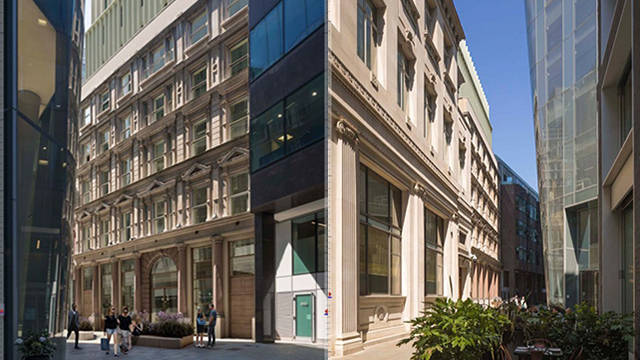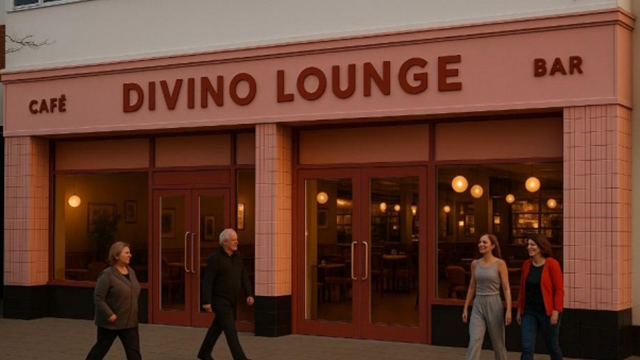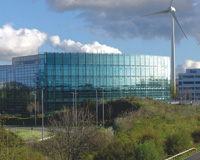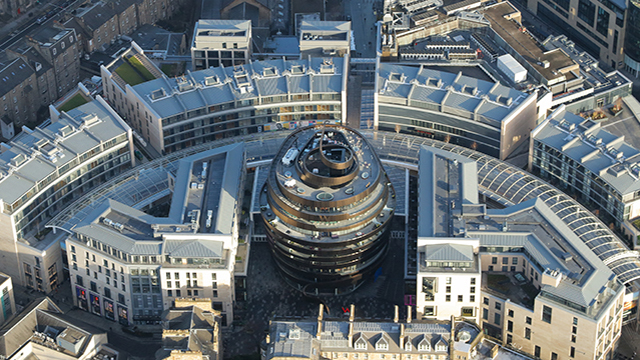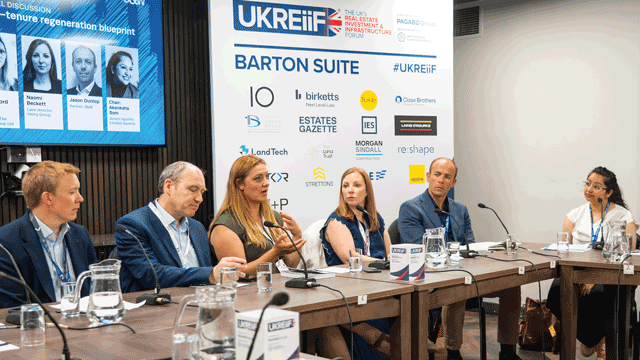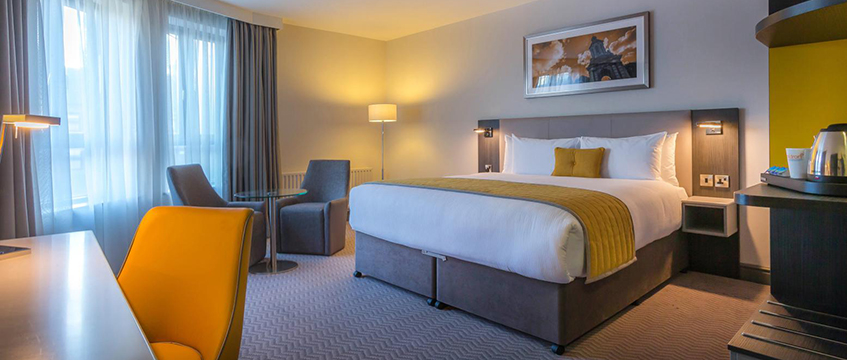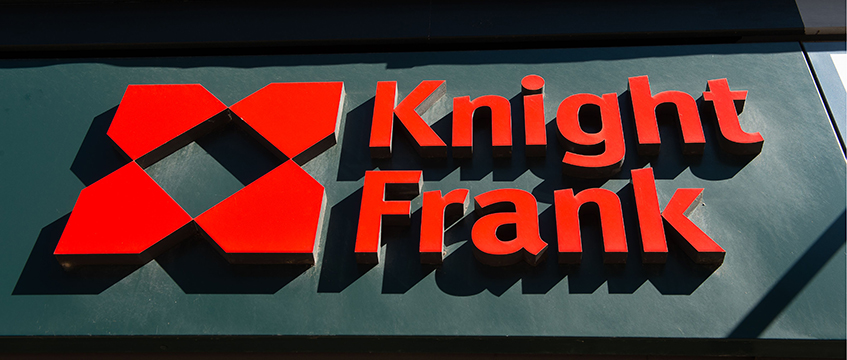At the junction of an arterial motorway and the main feeder road for a thriving city stands a 500,000 sq ft monument to speculative development.
The location is good and the spec is excellent, despite the unfinished electrics on the top floor. And the landscaping, parking and mise en scene are delightfully peaceful. Too peaceful.
This is a business park. It should be a hive of activity. Instead it is silent, dormant and empty.
“Some of these places have become mausoleums,” says Carl Potter, GVA’s head of offices. “The traditional business park is pretty much dead.”
Some may think this is overly negative. After all, according to GVAs’ own Business Parks Review, published this week, in the second half of 2011, take-up across the UK reached 2.27m sq ft. Far from signalling the death of the sector, it was the highest six-month total in three years, an increase of 39% on the previous six months and 12% above the five-year average.
But take-up is only half the story. Construction of business parks has plummeted to 665,000 sq ft, the lowest level since GVA began the survey 16 years ago.
And in spite of this lack of new stock, availability reached 16.9m sq ft at the end of the year, also the highest recorded in the GVA survey’s history, and up 4% from the previous six months. The vacancy rate nationally increased to 17.7%. “The healthy take-up, even in the South East, has been outweighed by space returned to the market,” says Potter.
Even where the market appears to be robust, there are gaping voids. The Cobalt and Quorum business parks in Newcastle, Maxim Park near Glasgow and Green Park in Reading have more than 500,000 sq ft empty, while Stockley Park near
Heathrow, Chatham Maritime and Solent Business Park in the South East and Scotland’s Aberdeen Gateway and Edinburgh Park have gaps of more than 250,000 sq ft each.
And for the space that is let, rental income continues to fall. Nationally, rents fell by 1.7%, compared with a 1% fall in 2010. Some rental growth – around 3% near Cambridge and 1.4% in the South East – was more than offset by falls of 6% in Scotland and a whopping 18% drop in Yorkshire and The Humber.
“One thing’s for sure,” says Jonathan Walsh, managing director of MEPC’s Birchwood Park, “the days of developers being able to build a shiny new office adjacent to an A-road and have occupiers clamouring for accommodation are long gone.”
Motorway junction
Potter agrees. “If it isn’t dead, it is on its knees. You need more than a collection of office buildings near a motorway junction. There has always been too much space for demand, and on top of that, some of it has simply been put in the wrong locations.”
And the trend, he suggests, is going against office parks.
“We have an unprecedented number of lease expiries coming up, and many companies are looking at whether they should be out of town or in city centres.”
Some office park owners are confident that they can lure and retain tenants. But it is not easy. “The ‘traditional’ office park isn’t necessarily dead but can be a challenging product,” says Rob Hemus, asset manager at IM Properties, which has an investment and development portfolio of around £1bn – a third of which is business parks. “Our office park properties are all performing well. But the key is to invest in the right ones.”
One example is One Kings Court, on the outskirts of Worcester. “We are about to undertake a refurbishment programme to create 20,000 sq ft of grade A space. It is less than two miles from junctions 6 and 7 of the M5 motorway, and it is actually prime, as the area’s best offices are located outside the historic city. There’s also little available high-quality office accommodation across the board.”
But even then, luring the tenants is a challenge.
For MEPC’s Walsh, the only thing that has died is a casual disregard for the needs of the occupier. “The criteria companies now seek can be summed up in two words – expect more.”
Walsh believes MEPC has “raised the bar”, by providing restaurants, gyms, children’s nurseries, 24-hour manned security and robust, reliable public transport as a “minimum standard”.
“There is now a two-tiered out-of-town office market separating those locations, which have been willing and able to provide these types of facilities and transport infrastructure and those locations which have not. Locations unable to meet these standards are being increasingly forced to dramatically reduce rents to offset these competitive advantages. That two-tier out-of-town office market is here to stay.”
Others, such as Jim Johnston, managing director for Goodman UK business parks, agree that, if done properly, business parks are far from defunct. He would say that, as Goodman has the largest portfolio of business parks in the UK, with 27 locations. But, in spite of the recession, demand for Goodman’s space has held up, with 90% occupancy at the end of 2011 and a further 1m sq ft being leased across the UK.
Johnston believes that, far from being dead, they are a very desirable product. “Business parks offer something different to town centres,” he says. “One size does not, and should not, fit all and the property industry needs to provide a range of business accommodation to offer businesses what they want and where they want it.”
The future, says Johnston, is not about businesses in isolated glass boxes in the middle of nowhere, but new, out-of-town communities. “We believe that the winning formula is to create a campus-style environment which encourages customers to interface with each other and the local community. Each location is carefully landscaped and offers a range of health and fitness activities designed to ensure that employees based on site are fit in body and mind.”
Public transport
Johnston says that the managed environments, public realm, and flexible and adaptable, efficient low-rise buildings with good public transport “enable firms to form clusters of specialist business communities”.
And he is not the only one committed to campus-style clusters. Some believe that mutually beneficial hubs – such as science parks, or creative clusters like Paintworks in south Bristol – are the only realistic way forward.
“That clustering tendency is becoming more prevalent,” says Potter. “It is not new – clusters have been emerging since the industrial revolution. But they are different from the ones in, say, the early 1900s. There are some quite exciting developments, such as the aerospace and manufacturing clusters growing up in the Midlands.”
In some cases, this is resulting in a mix of office and light industrial, feeding off one another. Capital & Centric is one owner that feels that the future is more about hybrid units of office and industrial space. It is developing mixed units at Estuary Banks in Liverpool and at Crown Business Park in Rochdale.
“We are looking at tweaking a number of traditional office parks to take in some industrial and related manufacturing,” says Potter. “But others require more drastic surgery.”
Potter’s team has been working with a growing number of clients looking for a bolder cure. “Not a month goes by without someone asking us what they can do with an empty business park.”
For some it is not the existing space that is the problem, it is what to do with the other acres that have yet to be developed out. “Many of them have no future as they are – certainly not the future that was planned for them. The thing we are looking at is which have alternate uses.”
For Potter these extra acres are an exciting opportunity. “The pressure on the green belt means that business parks can be very attractive for alternate uses. For instance, if the local authority is not reaching its housing targets, they should be aware that there is this development land.”
At Kettering Business Park, offices were planned for most of the 92 acres of development. Now, after Potter’s magic, it is to be mostly residential. The same is being proposed for the remainder of BAM’s Parklands.
“This is the future,” he says. “Whether the market will bounce back will depend on spec circumstances. It is all to do with great quality in the best locations. But in some of the poorer parts of the country you will not see the demand.
“Even in areas with healthy demand, you have to ask whether the office park is a good enough format anymore.”
The appliance of science
“We should learn lessons from Silicon Valley,” says Bonnie Dean, chief executive of the Bristol & Bath Science Park, which opened in September last year. “It isn’t just the best known business park market in the world – it is also the best known hi-tech cluster.” She should know. She was brought up in the valley. And now she wants to apply that experience to Bristol.
The 59-acre science park, in Emmerson’s Park, north of the city, has been designed, developed and managed by Quantum Property Partnership – a joint venture between Quintain Estates & Development and Aviva Investors.
“The occupants range from small-scale start-ups to large businesses,” says Dean. But far from being mere neighbours, “they feed off each other”.
“One of the things you have in traditional business parks is that businesses get quite siloed. Science parks do the opposite. They provide community space, which allows collaboration.”
Dean believes that this model could, should and will be applied to the rest of the business park market. “I definitely think that there is a demand for this type of offer in other sectors,” she says.
Not dead yet – at least in the South East
If the business park is dead, then some parts of the corpse are still twitching.
Take-up in the South East reached its highest level for more than four years, accounting for over half the total take-up. The Midlands had the highest level of take-up for two years and Scotland saw its highest level of take-up for five years.
But other areas did not fare as well. Take-up in the South West, Wales, the North West and Yorkshire and Humberside was below the five-year average.
Cambridge and the South East continued to see healthy demand. Chiswick Park let more than 100,000 sq ft, Astellas Pharma bought 100,000 sq ft of space on Hillswood business park in Chertsey and Nestlé took 126,000 sq ft at City Place near Gatwick.
In west Scotland, Scottish Power took 80,000 sq ft at Hamilton International Business Park. In the Midlands, call centre operator Hero TSC took 150,000 sq ft of space vacated by City Group at Pride Park in Derby.
There are also a number of healthy requirements in the North West, where the main activity has been near Manchester airport on Atlas Park and Concord Business Park.
There are also some sizeable requirements, particularly in the South East, M42 corridor and South Manchester.





